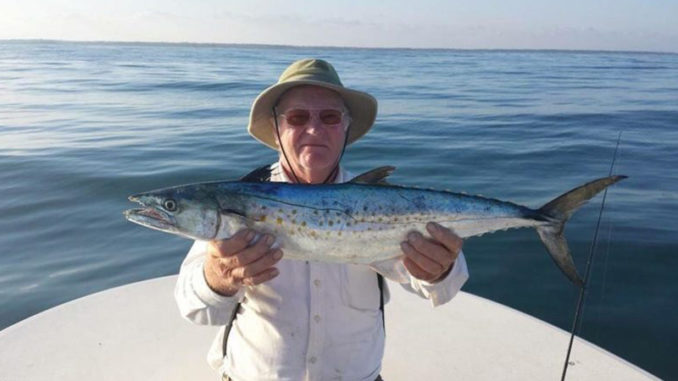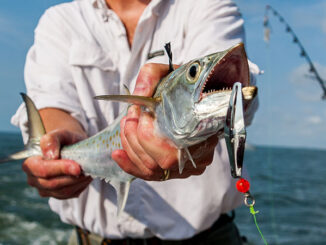
April brings first showing of Spanish mackerel from Cape Lookout to Cape Fear
April might have been the “cruellest” (sic) month for T.S. Elliott, a depressed, distressed poet when he penned The Waste Land, apparently because he didn’t enjoy winter’s disappearance and the rebirth of spring.
It’s also certain ol’ T.S. wasn’t much of an angler.
Along North Carolina’s coast and elsewhere along the South Atlantic, April always brightens anglers’ outlooks because the water comes alive again with one fish, two fish, three fish, bluefish — along with red drum, bonito, false albacore and, in some places, giant bluefin tuna.
But no species combines sportiness, greater numbers and palate delights more than Spanish mackerel — which are thick as fleas just a couple of long casts off most beaches, feeding on schools of glass minnows.
Anglers can catch Spanish mackerel almost from Cape Lookout south to the South Carolina border, but a handful of spots between Cape Fear and Cape Lookout have been fishing favorites. Sheepshead Rock, aka High Rock, a mile off Carolina Beach and Kure Beach, usually sees hot action the last two weeks of April and the first two weeks in May.
Anglers can troll Clark Spoons and Yo-Zuri Crystal Minnow plugs, or they can cast Got-Cha plugs to surface-feeding fish. Bigger fish arrive when the nearshore water temperature approaches and reaches 65 degrees. Let the temperature drop two degrees, however, and they’ll move on.
False albacore, bonito are also in the mix
Guide Wayne Crisco of Hampstead’s Last Resort Charters (910-465-0611) uses Diamond jigs to search for Spanish this month, and he’s liable to catch Atlantic bonito or false albacore.
“They all hit the same lures,” Crisco said. “The thing about Spanish is they school up underneath bonito schools feeding on the surface. If you burn a reel and keep a Diamond Jig near the top, you’ll likely get bit by a bonito. If you let it sink, Spanish will grab ’em.”
Crisco uses 6½-foot, medium-action Shimano rods and Stradic reels spooled with 15-pound monofilament with a 2-foot 40-pound fluorocarbon leader tied to a ¾- or 1-ounce jig.
“You can expect Spanish teeth to bite through regular monofilament, but they’ve got sharp eyes — so I use tougher, 40-pound fluorocarbon,” Crisco said.
He finds Spanish the old-fashioned but proven way on the ocean.
“I like a slick (calm) day so I can see fish bustin’ on top and diving birds splashin’ down on chopped-up baitfish,” he said. “You can get more Spanish, too, if you cast a Diamond jig just behind the surface commotion and let it sink. The Spanish are deeper and trail bonito schools. Then, if you want a bonito, you can throw just in front of a school and burn the jig back to you.”
If you’re a meat hunter, troll No. 0 to 00 Clark Spoons in a six-rod spread. It’s comfortable fishing, and filling a fish cooler doesn’t take long while trolling — the limit is 15 per day, with a 12-inch size minimum.
The key to trolling for Spanish is the correct speed, which is 4 to 5 knots; slower speeds won’t impart the correct action to a Clark Spoon.


